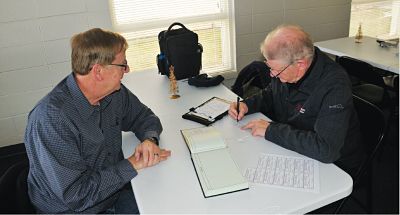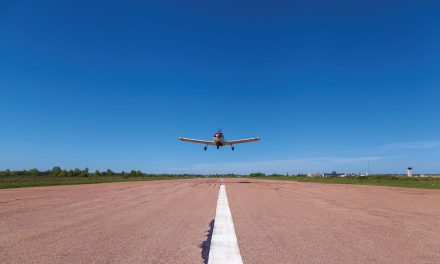
Pilots see clouds in a different way, and they are grateful
Later this year, JP Media LLC will publish a book by longtime pilot and writer Bill Cox entitled “My Sky: The Flights & Times of Bill Cox.” It will detail his lifelong travels as a pilot, in the beautifully scripted way in which only Bill can write. This is Chapter 1.
In my part of the sky, at least, the part I watch most often, Southern California, we don’t see many clouds. In late Spring through early Fall, fog creeps slowly in from the ocean, covering Southern California with a 1,000-foot blanket of soft-white, semi-diaphanous fluff. For most of the rest of the year, the Los Angeles Basin manifests more clement atmospherics, the dry, desert climate of Palm Springs (but without the heat) rather than the wet, cold rain of San Francisco.
You must travel to feel one with clouds. Through the miracle of several thousand cooperative turbine and piston engines (and a few dozen cranky ones) over 50 something years, I’ve witnessed clouds in most of their forms. I’ve watched thunderstorms in Kansas, Australia, and South Africa, monsters of rage and madness, campaigning across Wichita, the Outback or the Serengeti, leaving mayhem in their wake. I’ve been terrified by typhoons in Guam, Singapore, and the Philippines – insane, swirling masses of black-on-white, churning the ocean into monster waves.
I’ve endured blizzards in Canada and Greenland, white-outs that relegated instrument approaches to near-impossibilities. I’ve caromed through marshmallow cumulus in the South Pacific, swum in monsoonal rainclouds over Indonesia, and climbed through orange sandstorms above the arid Sahara and the waterless Kalahari.
You must travel to feel one with clouds. Through the miracle of several thousand cooperative turbine and piston engines (and a few dozen cranky ones) over 50 something years, I’ve witnessed clouds in most of their forms.
None of that makes me an expert on clouds, but it has certainly introduced me to my fair share of sky, from angry to insidiously calm. I’ve become something of a student of clouds, if a relatively uninformed one, always curious as to the how and why of the sky.
I can’t help but envy the astronauts their high station, looking down on the Earth from an elliptical orbit 200 miles up. They have a totally unobstructed view of clouds over much of the globe, and with the advantage of 16 orbits a day, they gain a new perspective of weather systems every 90 minutes.
High cirrus clouds must have special meaning for me, as I had a white German Shepherd named after them (now long gone to the great doghouse in the sky). Flying to Chile or Argentina, most pilots aviate down the west coast of South America, keeping the Andes on the left, and I’ve watched silky filaments of mare’s tail cirrus lingering above the spine of the Andes along much of that route.
Navigating through the Pan American pass east of Santiago en route to Buenos Aires, I’ve witnessed giant, lens-shaped lenticulars, motionless at 35,000 feet, hovering above Cerro Aconcagua, tallest mountain in South America. Lennies, as hardly anyone calls them, are congenial companions, stationary symbols of the collective power of mountains and sky.
Unfortunately, all clouds aren’t so benign. Some are filled with ice; others can house monstrous electrical storms, and a few can be home to whirling death. A dozen years ago, on a trip from Los Angeles to Singapore in an A36TC Bonanza, I was flying the last leg from Darwin across Bali and up the Indonesian chain. Sporadic thunderstorms are practically an everyday occurrence in that part of the world, and they were waiting for me with muscular bodies and cauliflower tops as I tracked northwest, starting at 12,000 feet and gradually being forced lower, trying to stay beneath the worst of them. The CBs wrapped around me all the way to the minimum en route altitude, and I could see occasional flashes of gold inside the clouds, lighting the cockpit with a strange, iridescent, yellow glow.
The Stormscope pointed out the worst concentrations of static discharge, and with nothing better to do than continue, I dodged around them as best I could. I flew on toward Singapore and finally, 13 hours after leaving Darwin, landed at Seletar Airport in the same murky, semi-darkness, punctuated by now-remote lightning partially obscured by the mist. I cleaned up the seat and vowed never to do that again.
Once, a few years back, flying the first Extra 400 to be ferried across the Atlantic, I was out of Iqaluit, Nunavut, Canada, headed for Wabush, Labrador. It was mid-summer on the Arctic Circle, so the sun had been up all night, and I was up early, too, hoping to clear customs in Bangor, Maine, and make it to Indianapolis for the overnight, then on to my destination of Phoenix the following day.
Just south of Ungava Bay, I spotted the first of what became dozens of the strangest clouds I’d ever seen. They looked like a cross between the Pillsbury Doughboy and the Michelin Man. These were strange, plump, white doughnuts, well-defined and stacked five to six layers tall, perhaps 400 feet from top to bottom, fatter in the middle than on the top and bottom. They drifted aimlessly at 8,000 feet along the coast of the Labrador Sea.
Naturally, I’d left my camera at home, so the best I could do later when I talked to my favorite weatherman in California, Jeff Kopps, was forward a sketch. No one had any idea what they were.
Most clouds aren’t that complex. Meteorologists such as Jeff can explain exactly how they form, mature, and die. Water becomes cloud becomes ice becomes water.
If the science is almost silly simple, the imagery is pure imagination. To those of us who study them and feel privileged to travel among them, clouds are more than simple meteorological phenomena. Look … there’s one that looks like a three-masted schooner over there. That’s the Empire State Building out front. And anyone can tell, that’s obviously a lion’s head off to the right, complete with mane.
Clouds can often be guideposts, especially when several airplanes are trying to join up over the ocean. Sure, we could use GPS, but it’s often more fun to say, “Hey, Jon, let’s meet at 10,000 feet by the big cumulus that looks like mouse ears.”
Clouds can often be guideposts, especially when several airplanes are trying to join up over the ocean. Sure, we could use GPS, but it’s often more fun to say, “Hey, Jon, let’s meet at 10,000 feet by the big cumulus that looks like mouse ears.”
If we occasionally treat clouds in jest, they can sometimes exact revenge. While ferrying a ’58 Baron from the West Coast to Cleveland following a double engine change, I was flying late in the afternoon through walls of cumulus over Indiana, punching through a cloud, emerging into the clear for a few seconds, then repeating the process.
Suddenly, I broke out of a CU and instantly knew I was dead. Another airplane had just emerged from the wall of white straight ahead and was coming directly at me, obviously flying at the wrong altitude. I had only the briefest millisecond to brace for the impact.
In an instant, I collided with my own black shadow, projected on the cloud ahead by the sun behind.
I could almost hear the clouds chuckling.
Learn more about My Sky at https://piperowner.org/bill-cox-book/





